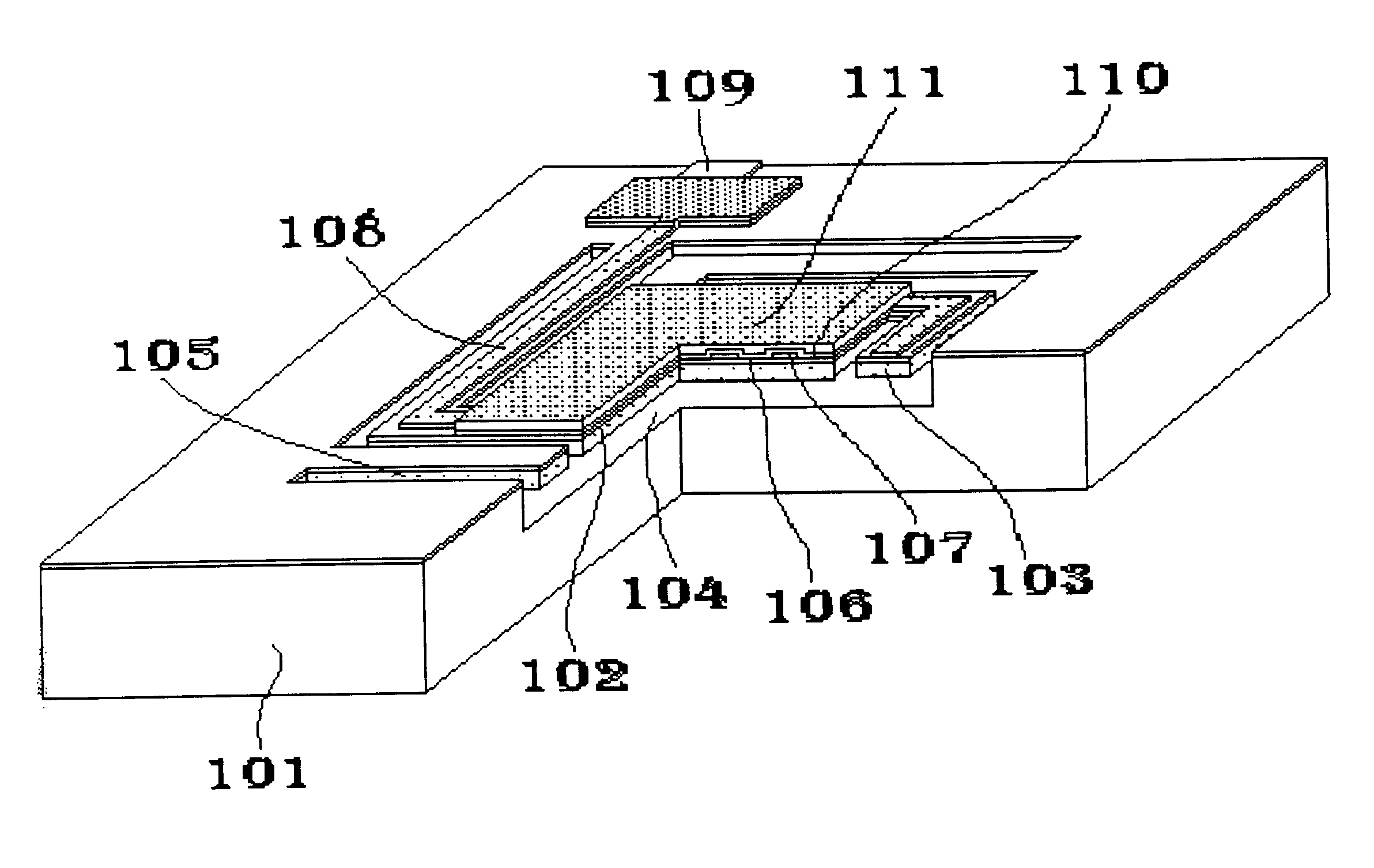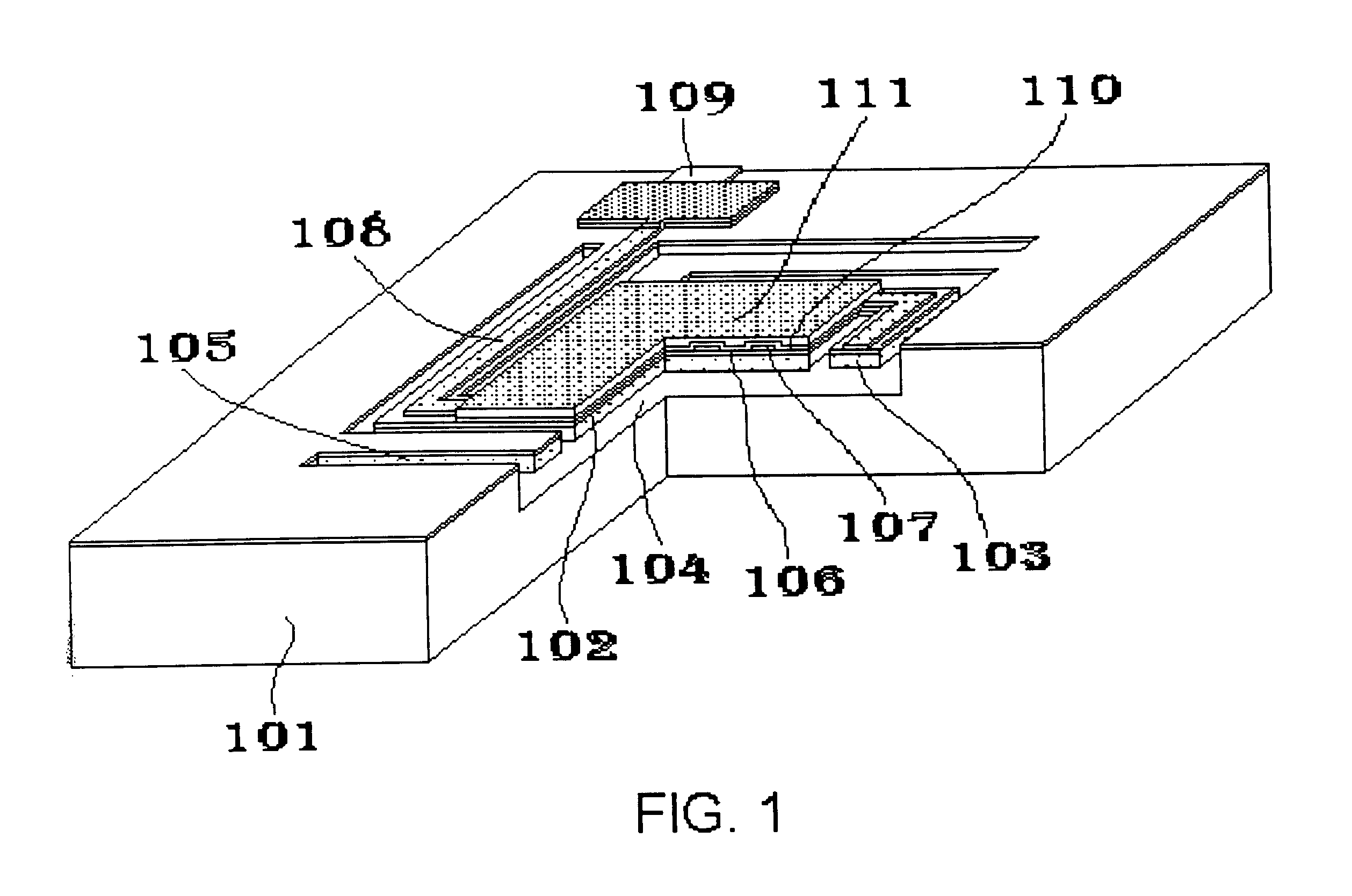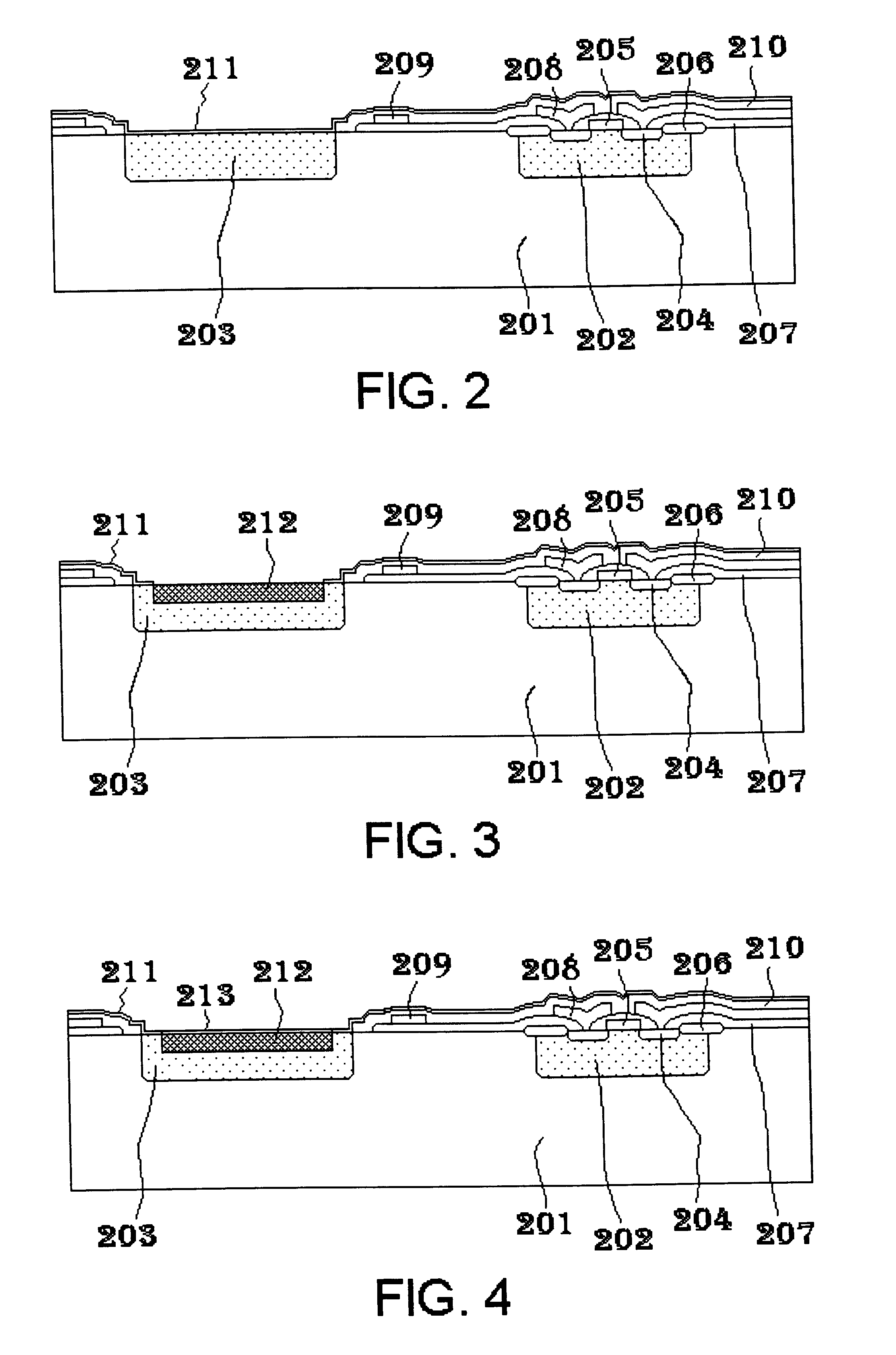Microbolometer infrared sensors
a technology of infrared sensors and microbolometers, which is applied in the direction of optical radiation measurement, radiation control devices, instruments, etc., can solve the problems of poor mechanical properties of such thin silicon dioxide films, incompatible with standard semiconductor technologies, and low thermal conductivity of silicon nitrid
- Summary
- Abstract
- Description
- Claims
- Application Information
AI Technical Summary
Benefits of technology
Problems solved by technology
Method used
Image
Examples
Embodiment Construction
In according to the present invention, a microbolometer infrared sensor array is disposed in a silicon substrate in which there already exists a CMOS circuit with readout electronics. Each microbolometer infrared sensor includes a porous silicon membrane bridging a cavity recessed into the substrate. The porous silicon membrane has four porous silicon beams. The distal ends of the porous silicon beams are anchored to the substrate, so that the porous silicon membrane is supported by the substrate and the surface of the porous silicon beams is aligned with the plane surface of the substrate. The surface of the porous silicon membrane and beams is coated with silicon dioxide film. A temperature sensitive resistor is disposed on the surface of the silicon dioxide film. The end portions of the resistor are disposed on the porous silicon beams and keep in contact with the proximal end portions of electrical conductors which already exist on the surface of the substrate. The surface of th...
PUM
| Property | Measurement | Unit |
|---|---|---|
| sheet resistance | aaaaa | aaaaa |
| porosity | aaaaa | aaaaa |
| compressive stress | aaaaa | aaaaa |
Abstract
Description
Claims
Application Information
 Login to View More
Login to View More - R&D
- Intellectual Property
- Life Sciences
- Materials
- Tech Scout
- Unparalleled Data Quality
- Higher Quality Content
- 60% Fewer Hallucinations
Browse by: Latest US Patents, China's latest patents, Technical Efficacy Thesaurus, Application Domain, Technology Topic, Popular Technical Reports.
© 2025 PatSnap. All rights reserved.Legal|Privacy policy|Modern Slavery Act Transparency Statement|Sitemap|About US| Contact US: help@patsnap.com



